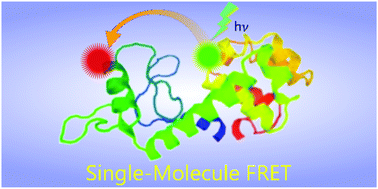Single-molecule fluorescence resonance energy transfer in molecular biology
Abstract
Single-molecule fluorescence resonance energy transfer (smFRET) is a powerful technique for studying the conformation dynamics and interactions of individual biomolecules. In this review, we describe the concept and principle of smFRET, illustrate general instrumentation and microscopy settings for experiments, and discuss the methods and algorithms for data analysis. Subsequently, we review applications of smFRET in protein conformational changes, ion channel open–close properties, receptor–ligand interactions, nucleic acid structure regulation, vesicle fusion, and force induced conformational dynamics. Finally, we discuss the main limitations of smFRET in molecular biology.


 Please wait while we load your content...
Please wait while we load your content...